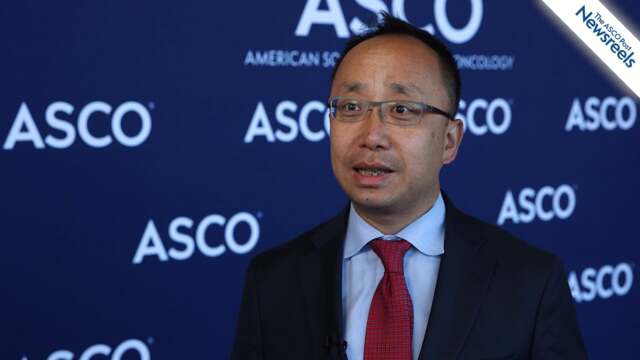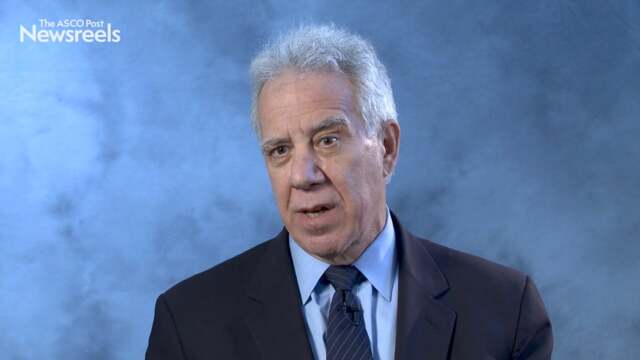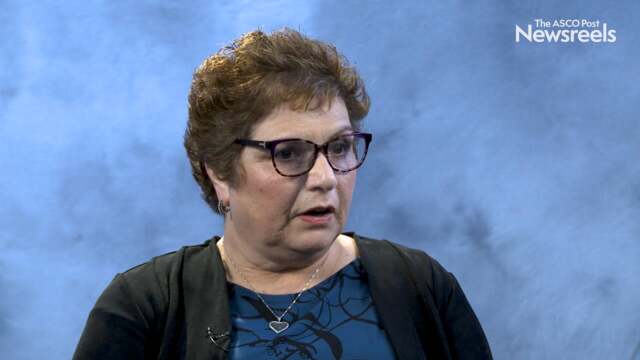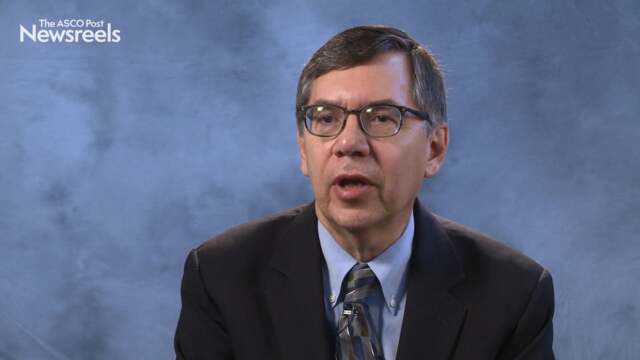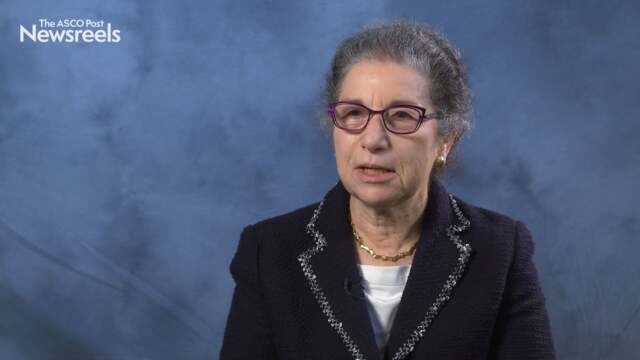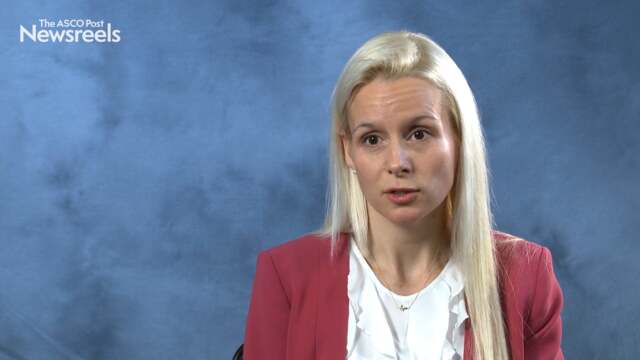Handheld Device for Detecting Heart Dysfunction in Anthracycline-Exposed Survivors of Childhood Cancer
Cardiovascular complications, such as anthracycline-related heart failure, are a leading cause of morbidity and mortality in survivors of childhood cancer, often developing at a time when these survivors are least engaged in long-term survivorship care, prompting the need for new paradigms in...
Male Thyroid Cancer Survivors Face 50% Higher Risk of Cardiovascular Disease Than Women
Male thyroid cancer survivors have a nearly 50% higher risk of developing cardiovascular disease than women within 5 years of cancer diagnosis, according to a new study published by Park et al in the Journal of Clinical Endocrinology & Metabolism. More than 62,000 new cases of thyroid cancer...
Low-Fat Dietary Intervention and Overall Survival After Breast Cancer Diagnosis
In an analysis from the Women’s Health Initiative (WHI) trial reported in JAMA Oncology, Chlebowski et al found that overall survival after the diagnosis of incident breast cancer was improved in women in the reduced-fat dietary intervention group vs control group, reflecting reduced...
Eating a High-Quality Diet Could Decrease Cancer Survivors’ Risk of Death by 65%
Cancer survivors who consumed a balanced, nutrient-dense diet had a 65% lower risk of dying from cancer than survivors who ate a poor-quality diet, according to findings published by Deshmukh et al in JNCI Cancer Spectrum. The study suggests that more than focusing on any particular food group,...
Study Finds Breast Cancer Survivors Are Not Getting Recommended Number of Mammograms Postsurgery
Breast cancer survivors are not getting the recommended level of screening postsurgery, according to a study by Ruddy et al in JNCCN–Journal of the National Comprehensive Cancer Network. The study was led by Kathryn Ruddy, MD, MPH, Director of Cancer Survivorship for the Department of...
Tai Chi for the Treatment of Insomnia in Breast Cancer Survivors
Underrecognized and inadequately managed, insomnia is a significant burden for many cancer survivors. Often persistent over several years following diagnosis and treatment, sleep problems negatively affect quality of life and elevate the risk of depression and anxiety. In this installment of The...
Jun J. Mao, MD, MSCE, on Insomnia in Cancer Survivors: Trial Results
Jun J. Mao, MD, MSCE, of Memorial Sloan Kettering Cancer Center, discusses study findings on the effect of acupuncture vs cognitive behavior therapy in cancer survivors experiencing insomnia (Abstract 10001).
Treating Insomnia in Cancer Survivors
A Patient-Centered Outcomes Research Institute–supported randomized clinical trial of cancer survivors showed that 8 weeks of either acupuncture or cognitive behavioral therapy for insomnia (CBT-I) decreased the severity of insomnia among cancer survivors, though improvements were greatest among...
2018 ASCO: More Choices for Treating Insomnia in Cancer Survivors: Acupuncture and Cognitive Behavioral Therapy
A Patient-Centered Outcomes Research Institute (PCORI)-supported randomized clinical trial of cancer survivors showed that 8 weeks of either acupuncture or cognitive behavioral therapy for insomnia (CBT-I) decreased the severity of insomnia among cancer survivors, though improvements were greatest...
Obesity in Cancer Survivors: Identifying Teachable Moments
OBESITY IS associated with poor survival in patients with cancer, but when research is translated into survivorship care, obese and overweight patients can experience better outcomes, according to Karen Basen-Engquist, PhD, MPH, Professor of Behavioral Science and Director of the Center for Energy...
Survivors of Uterine Cancer Have Increased Risk of Heart Disease Years After Treatment Has Ended
A large population-based study by Soisson et al examining the long-term cardiovascular outcomes among survivors of endometrial cancer has found that women were at higher risk for a number of cardiovascular risks, including hypertension; diseases of the arteries, arterioles, and capillaries;...
Hormone Therapy and Diabetes Risk in Survivors of Breast Cancer
In an Israeli case-cohort study reported in the Journal of Clinical Oncology, Hamood et al found that hormone therapy in breast cancer survivors was associated with an increased risk of developing diabetes. The study involved a cohort of 2,246 women from the Leumit health-care fund diagnosed with...
Infection-Associated Late Mortality in Childhood Cancer Survivors Undergoing Splenectomy or Splenic Radiation
In a report from the Childhood Cancer Survivor Study published in the Journal of Clinical Oncology, Weil et al found that splenectomy and splenic radiation significantly increased the risk of infection-related late mortality among 5-year survivors of childhood cancer. Study Details The study...
ASCO Clinical Practice Guideline Update: Fertility Preservation in Patients With Cancer
As reported in the Journal of Clinical Oncology by Kutluk Oktay, MD, PhD, of Yale University School of Medicine, and colleagues, ASCO has issued a clinical practice guideline update on fertility preservation in adults and children with cancer. The update was informed by an update panel systematic...
Wendy S. Harpham, MD, FACP, Writes Gift Book to Change the Conversation About Hope for Cancer Survivors
Recently, Curant House announced the publication of Healing Hope: Through and Beyond Cancer by Wendy S. Harpham, MD, FACP, a physician-survivor of non-Hodgkin lymphoma and award-winning thought leader in survivorship. In this book (her eighth), Dr. Harpham presents 50 illness-related aphorisms in...
Meeting the Challenges of Providing Long-Term Psychosocial Care for Cancer Survivors
Focusing on the first year after a cancer diagnosis is necessary, but not sufficient, for delivering care to cancer survivors, according to Deborah Mayer, PhD, RN, Director of Cancer Survivorship at the UNC Lineberger Comprehensive Cancer Center at the University of North Carolina at Chapel Hill....
Efforts to Make Tobacco Cessation in Cancer Survivors Standard Practice
It is well established that smoking increases the risk for developing cancer, but when it comes to tobacco cessation in the cancer survivor population, should oncologists be stepping in, and what resources should they be using? Graham W. Warren, MD, PhD, posed these questions to the audience at the ...
Education Plus Exercise Improves Arm Mobility After Lymph Node Dissection in Women With Breast Cancer
In breast cancer survivors after lymph node dissection, a combined education and exercise intervention resulted in patients regaining full range of motion in both arms sooner than those who received education alone, according to follow-up from a phase III clinical trial reported by Electra D....
Elevated Suicide Risk Among Head and Neck Cancer Survivors Demands More Integrated Psychosocial Care
In general, the risk of suicide among cancer survivors is about 50% higher than in the general population, but this risk is especially elevated among survivors of head and neck cancer, according to research presented by Nosayaba Osazuwa-Peters, BDS, MPH, CHES, of the Department of...
Expert Point of View: Timothy Gilligan, MD, MSc
“IN THE PAST, patients were often told to rest and reduce their physical activity during treatment, but we now know that exercise is both safe and beneficial,” said Timothy Gilligan, MD, MSc, moderator of a presscast where these results were presented prior to the Cancer Survivorship Symposium....
Four Years Posttreatment, Exercise Improves Physical Activity Levels, Reduces Fatigue in Patients With Breast and Colon Cancers
IN PATIENTS WITH breast and colon cancers, a physical exercise intervention conducted during adjuvant chemotherapy improved total physical activity levels 4 years after treatment, with a trend toward less fatigue, according to a follow-up study from the randomized multicenter PACT study, presented...
EXPERT POINT OF VIEW: Julia Rowland, PhD
“THE GOOD NEWS is cancer survivors are living longer. The bad news is they’re living long enough to experience the late consequences of curative treatment,” said Julia Rowland, PhD, formerly of the National Cancer Institute and now with Smith Center for Healing and the Arts, Washington, DC, at the ...
Long-Term Risk of Cardiovascular Disease Increased Among Colorectal Cancer Survivors
COMPARED TO the general population, the risk of cardiovascular disease among colorectal cancer survivors was significantly increased more than 10 years after their cancer diagnosis, according to research presented by David Baraghoshi, MSTAT candidate, of the Huntsman Cancer Institute at the...
Support, Inform Patients With ASCO Resources
Stock your practice with ASCO resources for your patients. Visit ASCO’s patient information website, Cancer.Net, for a newly updated comprehensive guide to colorectal cancer at cancer.net/colorectal and a shorter, one-page colorectal cancer fact sheet. Copies can be purchased from the ASCO...
Impact of Lifestyle Choices on Outcomes in Survivors of Gastrointestinal Cancers
Physical inactivity among adult survivors of gastrointestinal cancers was tied to poor health-related quality of life, according to researchers at the American Psychosocial Oncology Society (APOS) Annual Meeting.1 Also, physical inactivity (Chi-square = 5.605, P = .018) and alcohol use (Chi-square ...
Many AYA Cancer Survivors Have More Social Connections Than Peers With No History of Cancer
Survivors of adolescent and young adult (AYA) cancer often have stronger social networks than their peers with no cancer history, according to St. Jude Children’s Research Hospital researchers, who hope to translate that support into better health outcomes for the nation’s...
Seeking Beauty From the Inside Out After Cancer Treatment
BOOKMARK Title: Autobiography of a FaceAuthor: Lucy GrealyPublisher: Houghton Mifflin HarcourtOriginal Publication Date: June 1994Price: $14.95, paperback; 256 pages We live in a celebrity-obsessed society that is consumed by images of what we perceive as ideal beauty. Numerous studies show that ...
It Starts With a Discussion: ASCO Guideline on Interventions to Address Sexual Problems in People With Cancer
Dr. Katz is a certified sexuality counselor at CancerCare Manitoba, Canada. SEXUALITY AND SEXUAL functioning are important to cancer survivors, and considering the significant number of survivors, this is an issue that should not be ignored. In a survey of cancer survivors who had completed...
Interventions to Address Sexual Problems in People With Cancer: ASCO Clinical Practice Guideline Adaptation of CCO Guideline
AS REPORTED in the Journal of Clinical Oncology by Jeanne Carter, PhD, of Memorial Sloan Kettering Cancer Center, and colleagues, ASCO has issued a clinical practice guideline adaptation of the Cancer Care Ontario (CCO) guideline on interventions to address sexual problems in people with cancer.1 ...
Adolescent and Young Adult Cancer Survivors Often Struggle With Reproductive and Sexual Health Concerns
FOR MANY adolescents and young adults (AYAs), the most distressing and troubling phase of the cancer continuum that began with diagnosis is survivorship, and among the toughest challenges are those involving sexual health and reproduction, Jessica Gorman, PhD, MPH, stated at the 11th Annual...
Internet-Delivered Cognitive-Behavioral Therapy for Insomnia in Breast Cancer Survivors
In a Danish study reported in the Journal of the National Cancer Institute, Zachariae et al found that an Internet-delivered cognitive-behavioral therapy intervention improved insomnia among breast cancer survivors. Study Details In the study, 255 patients from a national sample of Danish breast...
David Baraghoshi, on Colorectal Cancer and Cardiovascular Disease Risk
David Baraghoshi, of the Huntsman Cancer Institute at the University of Utah, discusses an assessment of cardiovascular risk more than 10 years after diagnosis for colorectal cancer survivors compared with a cancer-free general population cohort (Abstract 113).
Flora E. van Leeuwen, PhD, on Hodgkin Lymphoma Treatment: Toxicities in Female Survivors
Flora E. van Leeuwen, PhD, of the Netherlands Cancer Institute, discusses cardiovascular disease risk after treatment-induced primary ovarian insufficiency in female survivors of Hodgkin lymphoma (Abstract 114).
Lawrence N. Shulman, MD, on The New Survivorship Standard: Expert Perspective
Lawrence N. Shulman, MD, of Abramson Cancer Center at the University of Pennsylvania, discusses the Commission on Cancer’s efforts to promote robust survivorship care and how its new recommendations will affect clinical practice and patients.
Christopher J. Recklitis, PhD, MPH, on Sexual Aids and Supportive Care: Study Findings
Christopher J. Recklitis, PhD, MPH, of Dana-Farber Cancer Institute, discusses a study investigating the availability of supportive care sexual aids and resources for cancer survivors at U.S. cancer centers (Abstract 134).
Christopher J. Recklitis, PhD, MPH, on Mental Health in Cancer Survivors
Christopher J. Recklitis, PhD, MPH, of Dana-Farber Cancer Institute, summarizes two key papers on mental health: suicide risk among survivors of head and neck cancer vs other types of cancer; and the fear of cancer recurrence—its associations with mental health status and individual characteristics among cancer survivors (Abstract 146).
Electra D. Paskett, PhD, on Breast Cancer and Arm Mobility: Clinical Trial Results
Electra D. Paskett, PhD, of The Ohio State University Comprehensive Cancer Center, discusses study findings on whether exercise helps women with breast cancer regain arm mobility after lymph node surgery (Abstract 123).
Paul B. Jacobsen, PhD, on The Impact of Survivorship Care Plans: Expert Perspective
Paul B. Jacobsen, PhD, of the National Cancer Institute, discusses his evaluation of whether survivorship care plans have a positive impact on health outcomes and health-care delivery for cancer survivors, in both the long and short term (Abstract 2).
Arti Hurria, MD, on Survivorship Care for the Aging Population
Arti Hurria, MD, of the City of Hope, discusses ways to incorporate the principles of geriatrics into oncology care and offer targeted interventions for older survivors.
Carrie R. Howell, PhD, on Reducing Risks for Childhood Cancer Survivors: Trial Results
Carrie R. Howell, PhD, of St. Jude Children’s Research Hospital, discusses study findings on a web-based exercise intervention for adolescent survivors, who are at increased risk for obesity and metabolic syndrome. The program was designed to improve fitness, cognition, and quality of life (Abstract 102).
Patricia A. Ganz, MD, on Progress in Cancer Survivorship Care
Patricia A. Ganz, MD, of the University of California, Los Angeles, and this year’s recipient of the Ellen Stovall Award for Advancement of Cancer Survivorship Care, discusses her 30-year-long career researching and advocating for survivors and quality care.
Genevieve Chaput, MD, on Teaching Primary Care Providers About Survivorship
Genevieve Chaput, MD, of McGill University Health Centre, discusses an accredited workshop that increased primary care providers’ confidence and knowledge about cancer survivorship, which is key to supporting their growing role in post-treatment care (Abstract 20).
Lynda M. Beaupin, MD, on Adhering to Follow-up Care: An Analysis
Lynda M. Beaupin, MD, of the Roswell Park Cancer Institute, discusses her findings on the factors contributing to adolescent and young adult cancer survivors not seeking follow-up care (Abstract 29).
NCCN Summit Explores Survivorship Issues for Patients and Clinicians
When Yelak Biru was diagnosed with multiple myeloma in 1995, he and his physicians had one main posttreatment goal: to detect and treat any relapse early and to prolong survival as long as possible with the limited drugs available. Then, in the early 2000s, came newer treatments. Myeloma survival...
2018 SURVIVORSHIP: Many Young Adult Cancer Survivors Forgo Follow-up Care After Cancer Treatment Ends
Despite survivorship guidelines from ASCO and other organizations regarding follow-up care after cancer treatment ends, follow-up care is generally lacking for adolescent and young adult (AYA) cancer survivors. Since AYA cancer survivors are at an increased risk for late effects from their cancer...
2018 SURVIVORSHIP: Therapeutic Sexual Aids Frequently Not Available for Cancer Survivors Who Need Them
Cancer care guidelines recommend that cancer survivors who experience sexual dysfunction after cancer treatment use therapeutic aids to help improve their sexual health. However, a new study of 25 leading cancer centers found that 87% of the centers reported having no sexual aids available on site...
2018 SURVIVORSHIP: Exercise Speeds Improvement in Arm Mobility After Surgery for Breast Cancer
New findings from a clinical trial of women with breast cancer suggest that guided exercise with a physical therapist after lymph node dissection helps women regain their range of arm motion more quickly. These findings will be presented by Paskett et al at the upcoming 2018 Cancer Survivorship...
2018 SURVIVORSHIP: Exercising During Chemotherapy for Breast or Colon Cancer Has Long-Term Benefits
A follow-up study to a randomized clinical trial reveals that exercising during adjuvant chemotherapy helps people engage in more physical activity years later. Four years later, people with breast or colon cancer who had participated in an 18-week exercise program while receiving chemotherapy...
2018 SURVIVORSHIP: Web-Based Interventions Help Adolescents Stay Physically Active After Cancer Treatment
Survivors of childhood cancer are at increased risk for obesity and metabolic syndrome, which can lead to other serious health conditions, including heart disease, stroke, and diabetes. However, engaging in regular physical activity may help remediate these health issues in young survivors. A...
Effects of Group Psychosocial Intervention on Body Image and Quality of Life in Breast Cancer Survivors
In a study reported in the Journal of Clinical Oncology, Esplen et al found that a group psychosocial intervention was effective in improving body image concerns and breast cancer–related quality of life among breast cancer survivors. Study Details In the study, 194 breast cancer survivors...
